Today I picked up a 115 year old wood and canvas Kennebec that measures 15' long (I have yet to measure the beam or weight). I saw the ad on FB last night and deliberated only a little bit before deciding to pick it up 5 hours away in New Hampshire for an incredibly low price this morning. The gentleman who owned it had it for 50 years and took fantastic care of it, with a full restoration and recanvassing when he got it, and then regular varnish and paint as time unfolded... It's amazing that the canvas is still strong after 50 years! I still would like to bring it somewhere this winter perhaps and have a professional restoration and painting done, as there are some obvious aspects that are aging. But this boat far exceeded all my expectations. It is so much lighter than I thought it would be, and I have no problem getting it on and off the top of the car and into the water without any yoke system. On the water, it is nimble, quick, graceful, and joyful to paddle. It actually feels like it's floating above the water, and I was worried it would be swept away by the incoming wind gusts but it actually held strong and stayed course, but also turned beautifully when needed without effort. When I saw that it came with a keel my first thought was that it needed to go, but actually I enjoyed having it on there...I originally thought that by removing it, I might get some better rocker and maneuverability, but now I think it might be perfect just as it is! Closed gunwale is a nice look for a change as well... I would love to eventually get this boat strengthened up to do some light solo wilderness canoe camping. It paddles so well as I kneel at the beam, and think some extra weight might solidify it even more...I think my 65 lb shepherd mix Loba will enjoy it as well...
I am enjoying learning about the early days of Kennebec and its history with BN Morris...it's fascinating! It's truly remarkable to have such an incredible paddling experience with a canoe this old...More to come as I learn and experience more about this special boat! Some of the photos below were originally posted by the seller, and some are of my first paddle with it this evening...
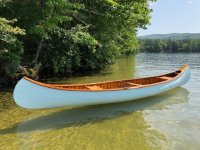
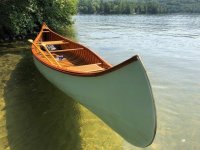
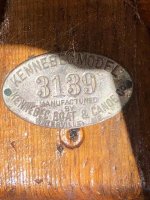
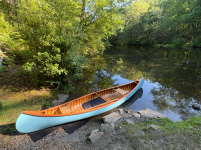
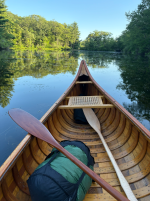
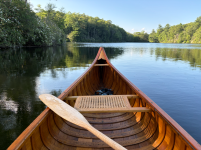

I am enjoying learning about the early days of Kennebec and its history with BN Morris...it's fascinating! It's truly remarkable to have such an incredible paddling experience with a canoe this old...More to come as I learn and experience more about this special boat! Some of the photos below were originally posted by the seller, and some are of my first paddle with it this evening...







Last edited:
